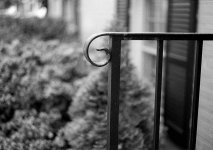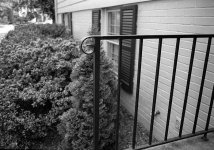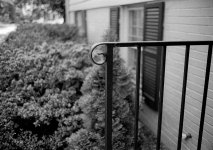M
mojojones
Guest
After seeing some images from the new Zeiss Sonnar C 50mm I decided to test my Leitz lenses for their Bokeh. I have three models: a Summicron 2/50 5th version Canada, a Elmarit 2.8/28 4th version Germany, and a Summicron 2/35 4th version Germany. While the 50 performed well, and the 28 was not anything special, it was the 35 that surprised me. I paid well for an excellent condition specimen of the lens know as the "King of Bokeh", but what I'm seeing here is far from what I'd expect. Here's what I got. All images were shot wide open focused at 1 meter (the point of the railing at the center of the frame).








